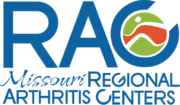So you’ve thought about it, and healthier eating or dieting isn’t the right New Year’s resolution for you. That’s okay, because there are plenty of other resolutions you can make! Another resolution that a lot of Americans make is to exercise more. In the same Harris Interactive survey with results published by Blue Diamond Growers, 36% of Americans’ 2014 New Year’s resolutions were around personal fitness. Perhaps you have been part of the 50% of people who make resolutions who break one or all of your goals by mid-January. But, when you think of setting a 2014 resolution for exercising more or improving your fitness, maybe you want to be in the 50% that succeed in keeping your goal.
As we mentioned with our Eat Your Way into the New Year post, it’s important to be specific and include measures when goal-setting. When considering improving your fitness/exercising, it can be a good idea to evaluate where you are with these before setting a new goal. How much physical activity do you currently get? What types of physical activity do you participate in? Where do you get your physical activity? Why do you currently engage in physical activity? Why do you want to improve your physical fitness or to exercise more?
Once you’ve determined what you currently do, you may want to consider what the Center for Disease Control and Prevention’s (CDC) Physical Activity Guidelines for Americans are. If you are older than age 65, have limits to some of your usual activities, and/or have one or more chronic health condition (arthritis, diabetes, heart disease, cancer, etc), follow the guidelines for Active Older Adults. The three recommended areas of activity include 150 minutes (in at least 10 minute increments) of moderate aerobic activity per week, muscle strengthening activities at least 2 days per week, and activities that promote balance at least 3 days per week.
If you don’t currently engage in regular physical activity, or only address one of these areas of activity, it may seem overwhelming to increase to do all three. Participants of the Stanford University programs Living a Healthy Life (Chronic Disease Self-Management Program (CDSMP)), Tomando Control de su Salud (Spanish version of CDSMP), or Better Choices, Better Health (online CDSMP), will recognize the process for setting achievable goals or action plans. Some questions to ask yourself are: What specifically will you do? How much will you do? When will you do it? How often will you do it? How confident are you that you can achieve your set goal?
Make your resolution something achievable in the immediate sense; you can always change it later. For example, if you currently walk every Tuesday for 20 minutes after work with a coworker, it may be unrealistic to immediately increase your goal to walking 5 days a week for 30 minutes each day. But, you may be able to identify another 20 minute period on one other day for the first week of January that you feel confident you can also walk. If you are confident in this goal, you are more likely to achieve it.
At the end of a week, re-evaluate your goal and determine if you would like to try again, maintain this goal, or if you feel confident that you can create a new goal building on your previous goal. Maybe by December 2014, you will have built up to include all of the guidelines set by the CDC and succeeded in completing your 2014 New Year’s resolution!
It may seem difficult to make a big life change overnight. So, don’t feel like you have to! Make a small change, be confident in it, and continue doing it if it works for you.
For more information on setting achievable New Year’s resolutions, specifically in regard to exercising/improved physical fitness, check out some of the links below:
Division of Nutrition, Physical Activity, and Obesity (CDC)
Healthy Weight – It’s not a diet, it’s a lifestyle! (CDC)
New Year’s Resolution: Get Fit (WebMD)
13 Ways to Exercise & Work Out Without a Gym Membership (Angela Colley, MoneyCrashers)
Go4Life (National Institute on Aging, NIH)
Helping Older Family Members Become More Active (National Institute on Aging, NIH)
Exercising in Cold Weather (National Institute on Aging, NIH)
Steps to Better Health programs – Arthritis Foundation Exercise Program and Walk With Ease, specifically (Missouri Arthritis and Osteoporosis Program and Regional Arthritis Centers)
